Alfa Romeo Tonale VS Dacia Spring
Alfa Romeo Tonale
The Alfa Romeo Tonale embodies the brand's timeless elegance and sporty DNA, captivating drivers with its bold design and dynamic presence on the road. Inside, the Tonale impresses with a perfect blend of luxury and cutting-edge technology, offering a sophisticated driving experience that remains true to the Alfa Romeo spirit. With its agile performance and distinctive character, the Tonale stands out in the competitive SUV market, appealing to those who seek both style and substance.
more informationDacia Spring
The Dacia Spring stands out as an affordable and environmentally friendly option in the electric vehicle market, combining practicality with a compact design ideal for urban settings. Its minimalist interior, while basic, provides all the essential features needed for a comfortable drive, reflecting its cost-effective approach. The vehicle's performance suits city driving, making it an appealing choice for those seeking an entry-level electric car.
more information @ media.stellantis.com
@ media.stellantis.com
 @ media.stellantis.com
@ media.stellantis.com
 @ media.stellantis.com
@ media.stellantis.com
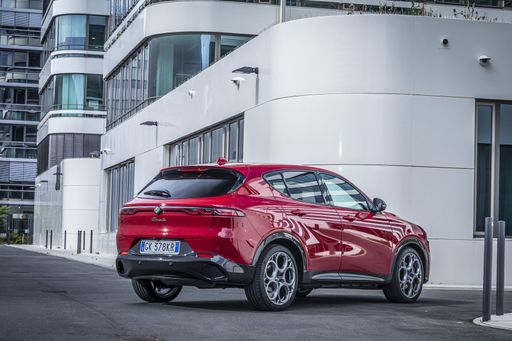 @ media.stellantis.com
@ media.stellantis.com
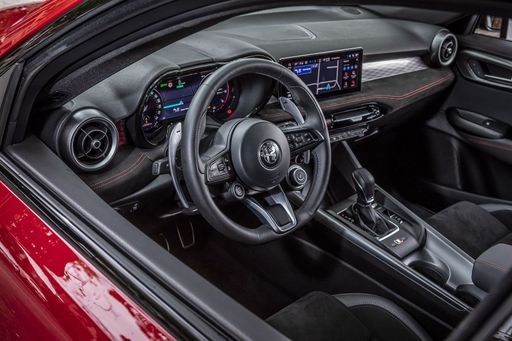 @ media.stellantis.com
@ media.stellantis.com
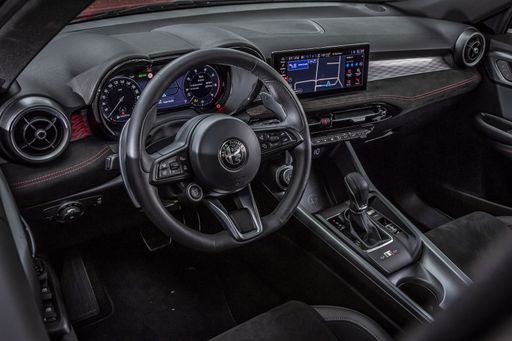 @ media.stellantis.com
@ media.stellantis.com
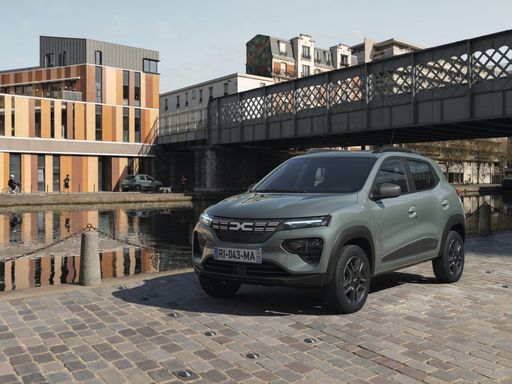 @ dacia-presse.de
@ dacia-presse.de
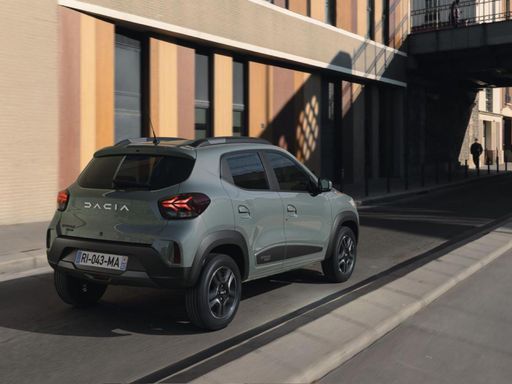 @ dacia-presse.de
@ dacia-presse.de
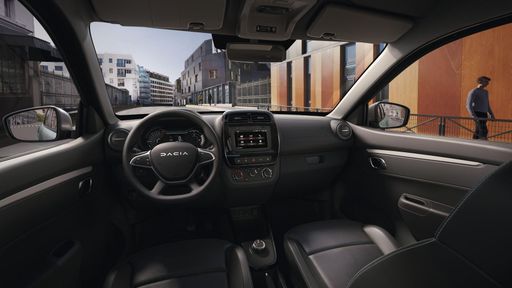 @ dacia-presse.de
@ dacia-presse.de
Costs and Consumption |
|
|---|---|
|
Price
about 34300 - 51900
£
|
Price
about 14500 - 17100
£
|
|
Consumption L/100km
1.3 - 5.6
L
|
Consumption L/100km
-
|
|
Consumption kWh/100km
-
|
Consumption kWh/100km
13.2 - 14.1
kWh
|
|
Electric Range
63
km
|
Electric Range
225 - 228
km
|
|
Battery Capacity
12
kWh
|
Battery Capacity
26.8
kWh
|
|
co2
30 - 140
g/km
|
co2
0
g/km
|
|
Fuel tank capacity
42 - 55
L
|
Fuel tank capacity
-
|
Dimensions and Body |
|
|
Body Type
SUV
|
Body Type
SUV
|
|
Seats
5
|
Seats
4
|
|
Doors
5
|
Doors
5
|
|
Curb weight
1600 - 1910
kg
|
Curb weight
1030 - 1050
kg
|
|
Trunk capacity
385 - 500
L
|
Trunk capacity
308
L
|
|
Length
4528
mm
|
Length
3701
mm
|
|
Width
1835
mm
|
Width
1583
mm
|
|
Height
1614
mm
|
Height
1519
mm
|
|
Payload
510 - 535
kg
|
Payload
265 - 285
kg
|
Engine and Performance |
|
|
Engine Type
Plugin Hybrid, Petrol MHEV, Diesel
|
Engine Type
Electric
|
|
Transmission
Automatic
|
Transmission
Automatic
|
|
Transmission Detail
Automatic Gearbox, Automat. Schaltgetriebe (Doppelkupplung)
|
Transmission Detail
Reduction Gearbox
|
|
Drive Type
All-Wheel Drive, Front-Wheel Drive
|
Drive Type
Front-Wheel Drive
|
|
Power HP
130 - 280
HP
|
Power HP
44 - 65
HP
|
|
Acceleration 0-100km/h
6.2 - 10.9
s
|
Acceleration 0-100km/h
13.7 - 19.1
s
|
|
Max Speed
194 - 212
km/h
|
Max Speed
125
km/h
|
|
Torque
240 - 320
Nm
|
Torque
113 - 125
Nm
|
|
Number of Cylinders
4
|
Number of Cylinders
-
|
|
Power kW
96 - 206
kW
|
Power kW
33 - 48
kW
|
|
Engine capacity
1332 - 1598
cm3
|
Engine capacity
-
|
|
Top speed
194 - 212
km/h
|
Top speed
125
km/h
|
General |
|
|
Model Year
2024
|
Model Year
2024
|
|
CO2 Efficiency Class
B, D, E
|
CO2 Efficiency Class
A
|
|
Brand
Alfa Romeo
|
Brand
Dacia
|
Alfa Romeo Tonale
The Alfa Romeo Tonale marks the brand's ambitious foray into the ever-popular SUV segment, presenting a blend of Italian flair and cutting-edge technology. As a compact SUV, the Tonale impresses not just with its aesthetics, but also with its innovative engineering and eco-friendly options designed for the modern driver.
Striking Design Meets Functionality
The exterior of the Alfa Romeo Tonale exhibits the signature elements of the brand, featuring a bold front grille and sleek LED headlights that draw immediate attention. Its sculpted lines emphasize a sporty stance while maintaining an air of elegance. The compact dimensions, measuring 4528 mm in length and 1835 mm in width, contribute to its agility and ease of maneuverability in urban settings.
Powertrain Options: Hybrid and Diesel Technologies
The Tonale offers a variety of powertrains that cater to different driving needs and preferences. With options including a hybrid setup that combines a 1.3-litre turbocharged unit with an electric motor, drivers can expect impressive efficiency without sacrificing performance. The hybrid models deliver exhilarating power, reaching outputs of up to 280 PS while achieving an impressive fuel consumption figure as low as 1.3 L/100 km, alongside an electric-only range of up to 63 km.
For those who prefer traditional combustion engines, the Tonale also presents diesel and petrol options. The 1.6 VGT-D Diesel variant boasts a frugal 5.3 L/100 km consumption, catering to drivers who prioritise long-distance efficiency.
Innovative Technology and Connectivity
Within the cabin, the Tonale offers a sophisticated technological interface, making it a hub of connectivity. The central touchscreen seamlessly integrates with smartphone systems, ensuring that drivers have access to navigation, entertainment, and communication features at their fingertips. The inclusion of advanced driver-assistance systems enhances safety, providing features such as adaptive cruise control and lane-keeping assistance, solidifying the Tonale's reputation as a modern vehicle apt for both city and highway driving.
Driving Dynamics and Comfort
The Alfa Romeo Tonale is not just about looks and technology; it also excels in driving dynamics. With a sophisticated suspension system and the option of all-wheel drive, the SUV delivers agile handling and a comfortable ride. The refined interior features premium materials and designer touches, ensuring a luxurious experience for both the driver and passengers. Up to five occupants can enjoy ample space, with a boot capacity ranging from 385 to 500 litres, accommodating everything from grocery runs to adventurous escapes.
Conclusion: A Modern Contender
In conclusion, the Alfa Romeo Tonale stands out as a compelling representation of the brand's commitment to innovation and performance. With its combination of hybrid efficiency, modern technology, and Alfa Romeo's traditional spirit, the Tonale is poised to attract a new generation of drivers looking for both style and substance in the increasingly competitive SUV market.
Dacia Spring
The Revolution of Affordable Electric Mobility: The Dacia Spring
The automotive world has witnessed remarkable advancements in electric vehicles (EVs), with the Dacia Spring emerging as a noteworthy contender in the affordable segment. Combining efficiency, affordability, and practicality, the Spring offers an intriguing prospect for eco-conscious individuals and city dwellers alike.
Powertrain and Performance: A Look Under the Hood
The Dacia Spring is equipped with an electric motor that delivers between 44 to 65 PS, translating into a versatile driving experience tailored to urban landscapes. It operates on a front-wheel-drive system, ensuring a familiar and manageable handling experience.
Dacia Spring's electric engine is paired with an automatic transmission, utilising a reduction gearbox. This setup allows for smooth acceleration and a top speed of 125 km/h, ensuring that everyday driving scenarios are handled with ease.
Efficiency and Range: Eco-Friendly without Compromise
Efficiency is a cornerstone of the Dacia Spring's design, boasting an energy consumption of just 13.2 to 14.1 kWh per 100 km. When fully charged, its 26.8 kWh battery offers a respectable range of 225 to 228 km, making it ideal for daily commutes and short trips.
Furthermore, the Spring takes pride in its commendable CO2-efficiency class A, emphasising its commitment to reducing environmental footprint with a zero-emission profile.
Design and Practicality: Compact yet Comprehensive
Lying in the SUV category, the Dacia Spring is compact with dimensions of 3701 mm in length and 1583 mm in width, making it a perfect match for urban environments where space is at a premium. Despite its modest size, it provides a generous boot space of 308 litres, ensuring practicality isn’t sacrificed.
Comfort and Interior: For the Everyday Journey
The Dacia Spring comfortably seats up to four passengers. The cabin offers a minimalist yet functional design, available in multiple trim lines including Essential, Expression, and Extreme, allowing customers to choose according to their taste and requirement.
With its ergonomic layout and simplicity, the interior is crafted to enhance the driving experience by focusing on essential needs, avoiding unnecessary distractions.
Affordability and Accessibility: Breaking Barrier
The Dacia Spring stands out in the electric vehicle market due to its affordability, with prices ranging from 16,900 to 19,900 €. This ensures that environmentally friendly transportation is accessible to a broader audience.
Additionally, the Spring allows for cost-effective maintenance and operational expenses, offering monthly running costs between 570 to 599 € and cost per km between 22.8 to 24 cents, making it an economical choice in the long run.
Final Thoughts: The Future of Urban Mobility
In summary, the Dacia Spring serves as a testament to how electric vehicles can be both affordable and practical, without compromising on essential features. Whether it is for the eco-conscious urbanite or those looking for a cost-effective daily driver, the Spring is positioned as a viable solution for navigating the future of urban mobility.
